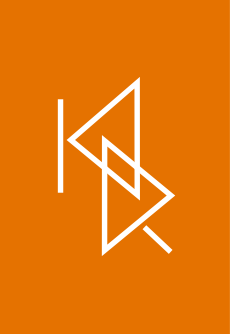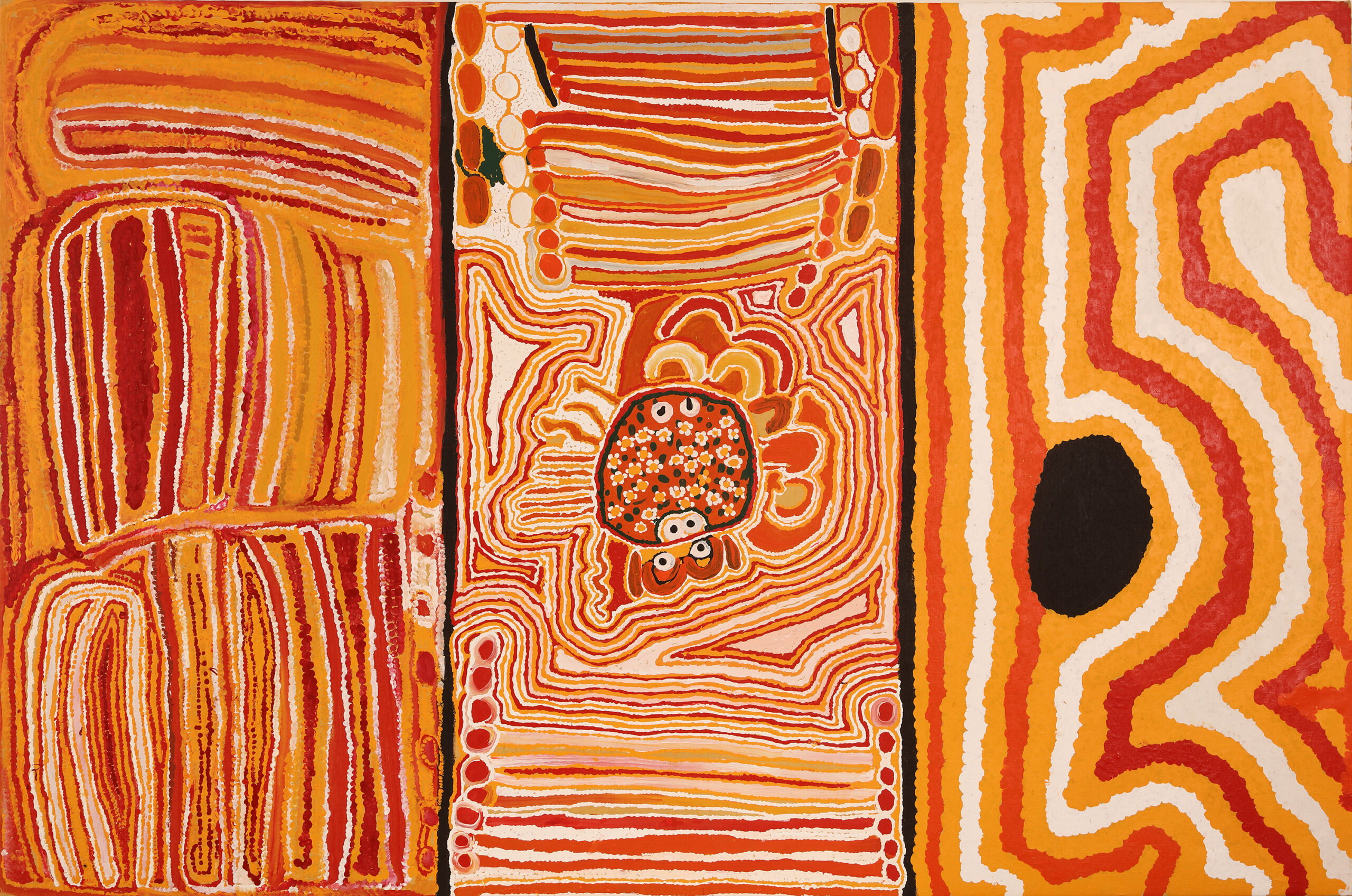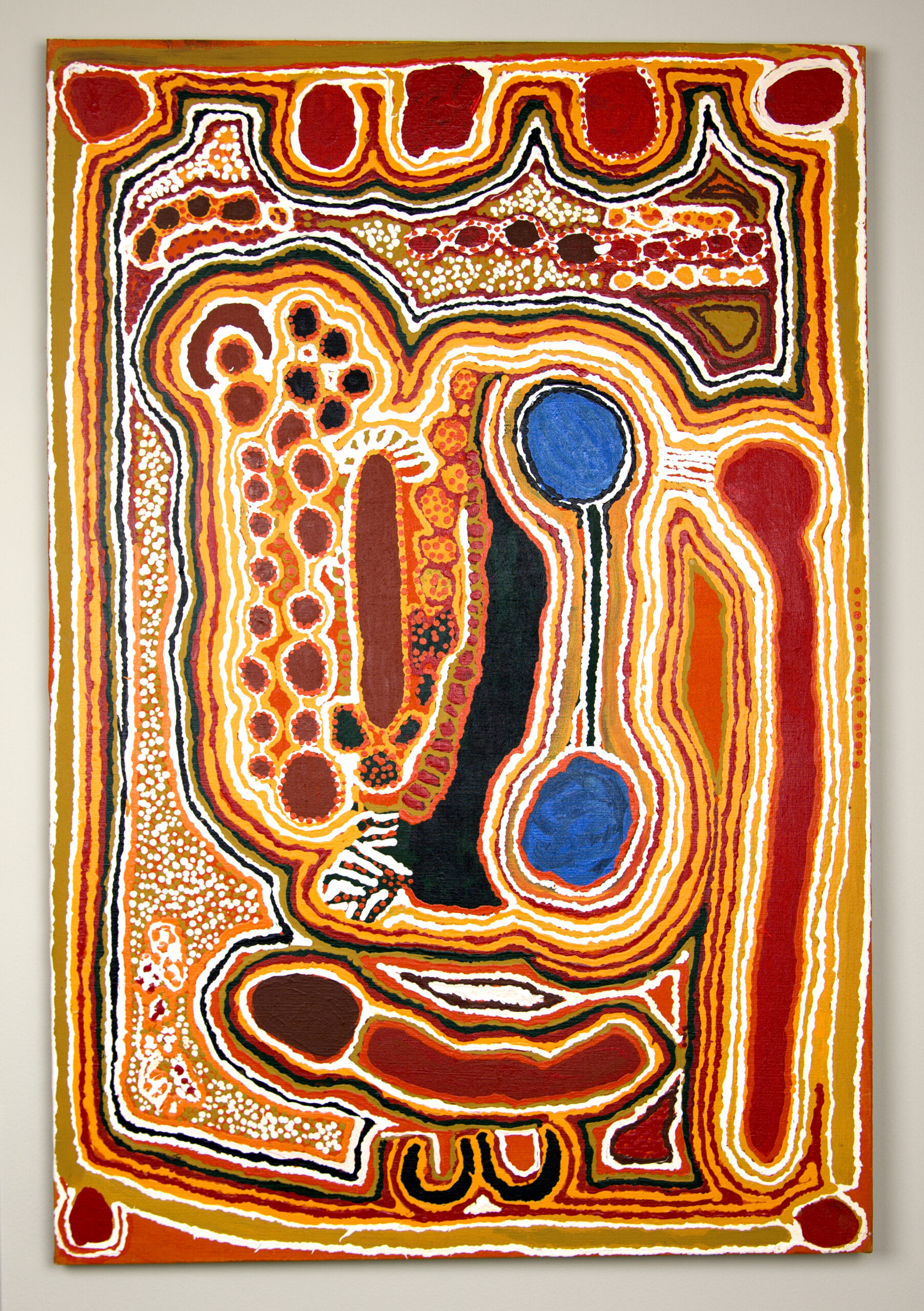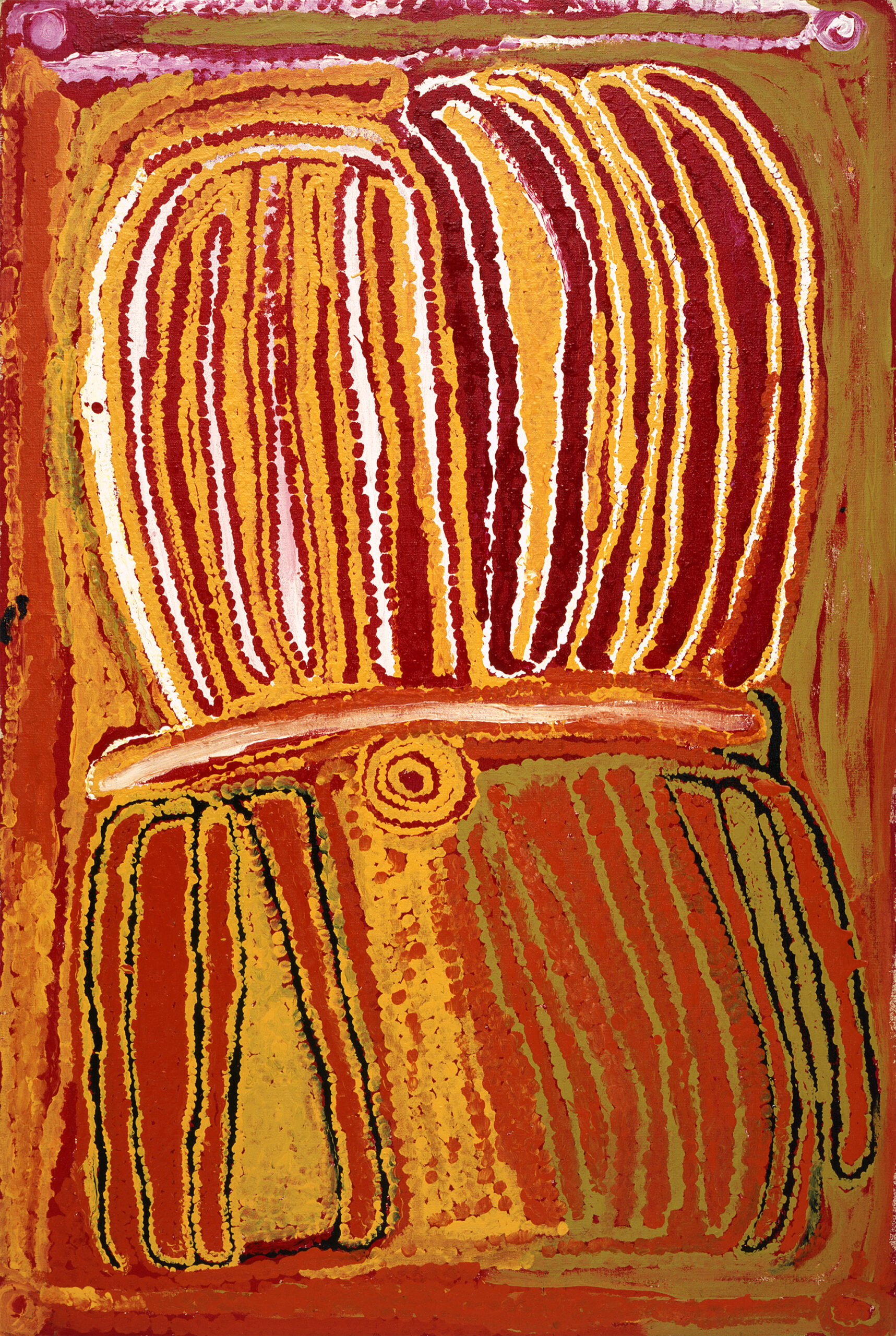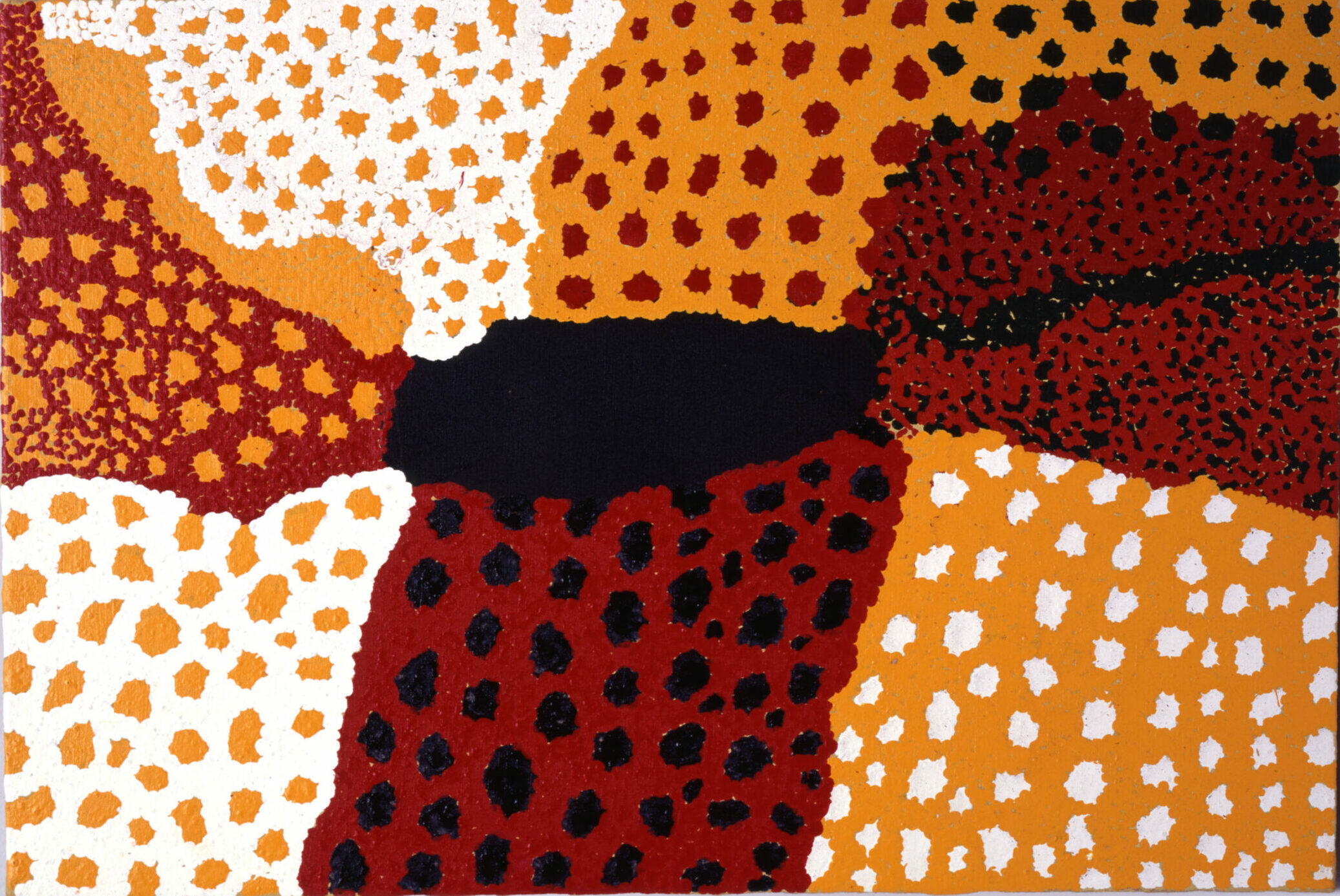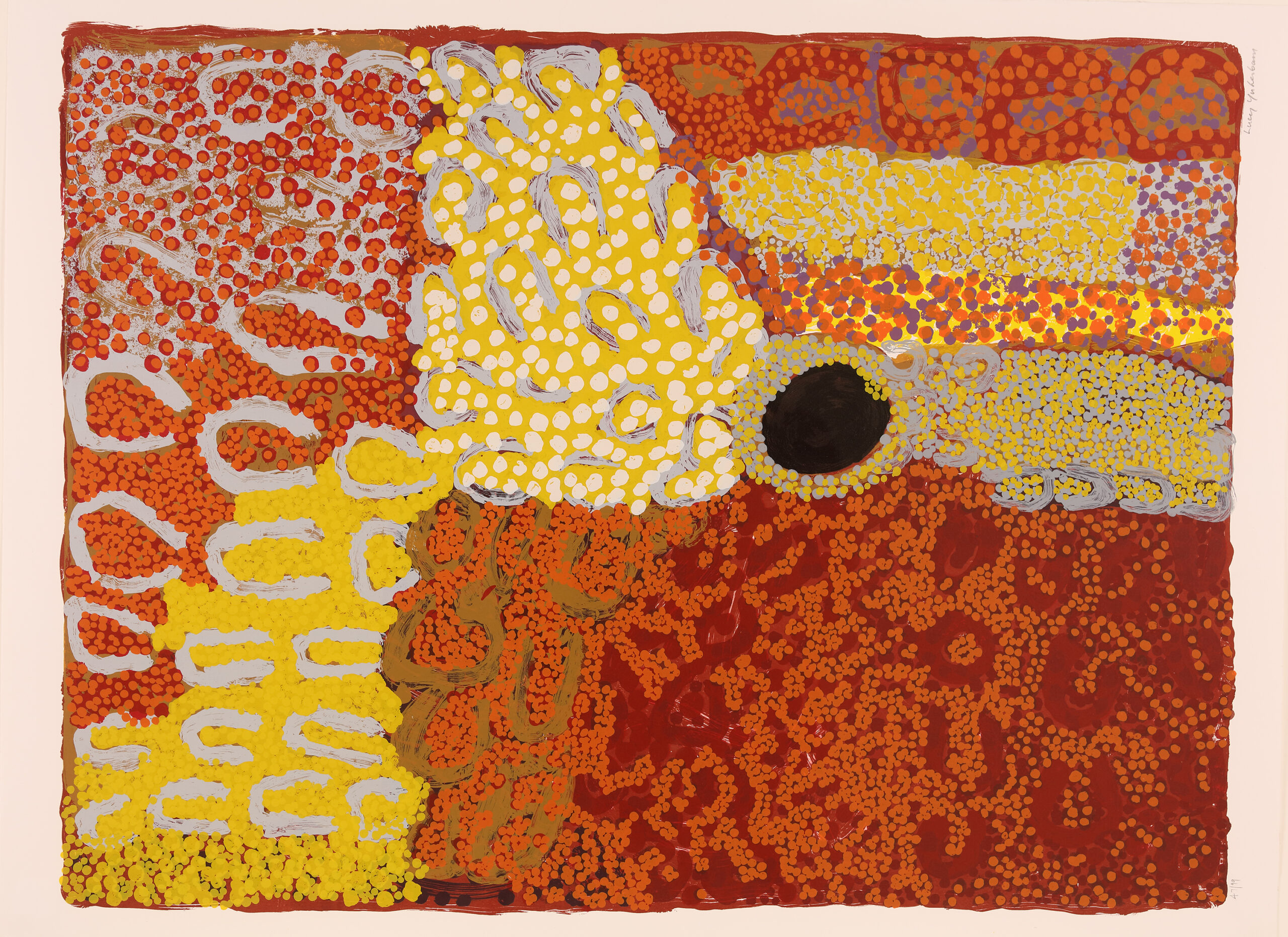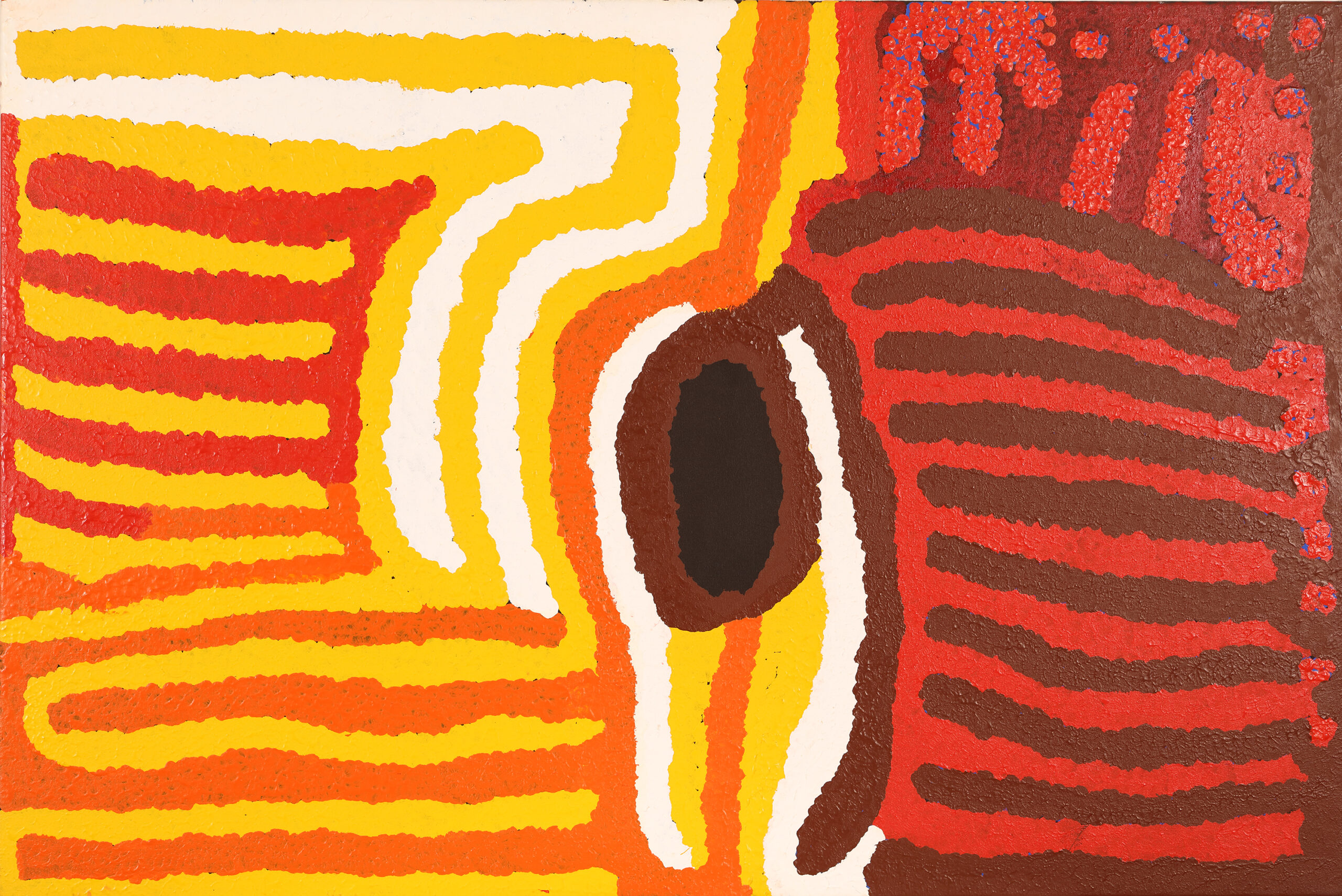Three Women from Wirrimanu
Exhibition
Three Women from Wirrimanu explores the remarkable painting practices of Aboriginal artists Eubena Nampitjin, Muntja Nungurrayi and Lucy Yukenbarri Napanangka. All three women grew up living traditional lives in the outback, worked at the same time at Warlayirti Artists, and became widely successful in the 1990s. Despite shared influences and a love of bright colors, their deep knowledge of desert Country is expressed in different styles that assert their individuality and their own distinct voices.
I like to do paintings, big ones, to keep my spirit strong.
– EUBENA NAMPITJIN
About
EUBENA NAMPITJIN was one of the most esteemed Law women in the Wirramanu community, being constantly consulted and deferred to in all matters of Law. Mukaka, Eubena’s mother, together with her uncle, gave her maparn (traditional healer) skills when Eubena was a young girl. In her formative years, Eubena and her family traveled and hunted, performing ceremonies and Law to look after their Country in the Great Sandy Desert. Most of her family had passed or moved to other parts of the country by the time Eubena had her first contact with non-Aboriginal people.
Eubena and her first husband, Gimme, traveled up the Canning Stock Route to Bililuna Station before joining the mission that eventually was established in its present site at Wirramanu. They assisted one of the missionaries, Father Piele, with a Kukatka dictionary. Although she lived at the mission, Eubena made frequent trips to her country, living there for extended periods.
Eubena started painting with her second husband, Wimmitji, in the mid-1980s. Her reputation grew both through their collaborations and as a solo artist. Her work resonates with the power of place and intimate knowledge of country that Eubena has been able to maintain throughout her life. Painting is like her second language and she paints persistently and with passion and dedication, weaving stories from the Tjukurrpa (Dreaming) as well as her personal history and knowledge.
MUNTJA NUNGURRAYI lived most of her life in Wirrimanu community. Like most people living there and the neighboring communities of Yagga Yagga and Mularn, Muntja was of mixed descent, in her case Pintupi and Mandildjarra. Her Country, Yikarra, lies between Kiwirrukura and the Canning Stock Route. When Muntja was still a young girl, her mother was killed in the bush during a dispute. Muntja was then taken to a Kukatja man who became her first husband and the man with whom she had her first son. After he was killed, Muntja, at the time a young mother, joined a man who remained her husband for the rest of her life, John Mosquito, a Walmatjarri rainmaker. Together, they had five sons.
Muntja was a big-hearted, determined individual, and a respected, influential Law woman as well. With no close relatives to support her in Wirrimanu as a young woman, she had to struggle to make her way into the community. As she grew older and gained recognition, she became an accomplished moderator and mediator in the community. Thanks to her generosity and mental acuity, she taught two generations of anthropologists; all of us who knew Muntja owe her a very great deal. Muntja was Catherine Berndt’s main collaborator. Without her knowledge, patience, warmth and understanding, many aspects of Aboriginal culture would have escaped my attention. Muntja was a strong dreamer, a skillful storyteller and singer, who was particularly well-versed in Tjukurrpa (Dreaming) stories and rituals, in sign language and sand drawings. One might add that, without question, Muntja was a local sociologist with a deep sense of reflexivity. She was willing to understand the white man’s ways and customs. In Wirrimanu, she was one of the first of her generation to agree to being baptized, whereas the others in the community only consented in 1981, during a mass baptism. Throughout her life, the contact of two Laws was an ongoing source of questions for her; for the most part, she was concerned with achieving an accommodation between both systems rather than blending or mixing them.
LUCY YUKENBARRI NAPANANGKA was born in the Great Sandy Desert, west of Kiwirrkurra and north of Jupiter Well in a place called Winpurpurla. As a young woman with two small children, she walked in from the desert to the old Balgo mission. She worked at the mission baking bread and gardening. It was there that she met and married Helicopter Tjungurrayi and together they had six children.
Lucy began painting in 1989, beginning with the dotting technique prevalent in desert art at the time. She began to emerge as a significant artist when she developed her style of using single color fields of dots, then later painting them so closely that they converged. Her distinctive canvases are thick with paint. Her method was to apply dotting kinti kinti (close close) – so close that it forms a single color field. Her works also reveal an interest in color contrast, where dark color water sources meet brightly colored areas.

